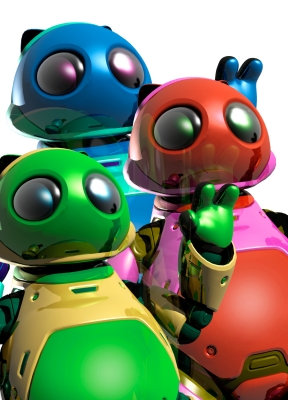27 Jan When Social Trends and Tech Trends Mate, “Smart” Toys are Born
In I’m Gonna Pop Some Tags I referred to an article indicating that toy innovation has been sluggish since the recession. But even if the average consumer might not feel the effects of an improving economy (yet), an increasing number of economists believe we are on our way out of the abyss. At the same time there seems to have been a collective epiphany that we are not producing enough scientist, especially computer scientists. This has spurred a new wave of truly transformational toys.
The most transformational and sophisticated new toys are remarkably low-tech in their design. Yet these toys answer focus areas within child development, learning and socialization. Expect innovation in various areas, but we may see particularly three emerging needs voiced by parents and educators: 1) driving computer literacy and programming skill, yet limiting screen time; 2) inspiring girls’ interest for STEM subjects; 3) virtualization of toys that provide immersive and interactive learning experiences.
Coding Companions. The two robots that make up Play-i teach kids 5 and up simple programming logic. Toy innovation is migrating into the science labs, and Play-i is developed by former executives at Google, Apple, and Frog Design. Primo, another code-cajoling wonder, consists of a wooden robot called Cubetto, a board that serves as a programming interface, and colored instruction blocks, which act as code and go in slots. Is your spouse the low-tech type that bans electronics on vacations? Don’t worry, your kid can still learn to code. Kickstarter funded Robot Turtles is a board game that teaches the basics of programming the way you sneak broccoli by baking the into brownies. Again, don’t be fooled by the low-tech formats.
STEM for girls. Goldie Blox is toolkit and a character that encourages girls to build machines. Girls tend to be less spatial, but more literally inclined than boys, which is why the narrative is around the character Goldie, who encourages the machine building. Roominate is another engineer-driven toy concept for girls – a kit that allows girls to build dollhouses with electrical circuits and wind mills.
Augmented Reality. Uses both artificial intelligence and augmented reality Animin is an advanced virtual pet concept that thrives when a child gives it proper care. The pet is projected onto any real life surface from a smart device and won’t be exposed to pasta sauce spills or forgotten at far-away destinations like tagalongs of the snuggly kind. Cypher Kids is a new line of Augmented Reality-powered apps and games for children from Cypher Entertainment. Some of the toys bring kids into a vivid virtual world that allow stories to come to life before their eyes or let them venture on 3D digging expeditions for dinosaurs.
Gone is the fascination with electronic trinkets with bells and whistles designed to entertain rather than to facilitate children’s innate skills and creativity. Savvy parents today worry about tech-addiction and passivity-inducing close-ended toys and entertainment. The new mantra is “If you want to play it, learn how to code it”. Growing demand for computer scientists has spawned initiatives like Hour of Code, which inspired 15 million students in 170 countries learn computer coding last December alone. This STEM-related orientation is most strongly felt among parents of girls who are often disappointed with recent half-hearted attempts at creating more “girl power” toys such as Lego Friends and Computer Scientist Barbie. The most common complaint is that these toys do very little in terms of teaching STEM related skills and continue to revolve around gender stereotypical themes like beauty and home making. While not denouncing ‘girly’ elements, these new concepts use girls’ preferences as a means to grow their curiosity further. Hence, both Goldie Blox and Roominate come in color combinations girls tend to prefer and are based on well-tested girl themes such as dollhouses and story narratives. The most interesting implication of the new tech toys is that while seeming ostensibly low tech, they are constructed with the distinctive goal of provoking tech literacy in children. Some of these toys, like the wooden Cubetto looks more like a traditional Montessori device than a robot. Writing in The Atlantic last year about the Touch-screen Generation, Hanna Rosin discovered that parents working in the computer industry are often surprisingly luddite when it comes to shielding their children from excessive “screen time”. Common for all of these toys is that they take the kids away from the screen, while still teaching them hard skills and soft skills through non-screen interfaces.



Jenni
Posted at 02:25h, 31 JanuaryThis is great, thanks for all the wonderful ideas of things to add to wish lists!
Anne Boysen
Posted at 02:31h, 31 JanuaryThanks! I’m so glad you found it useful, Jenni! I’m thinking of getting some of these for my older children as well.